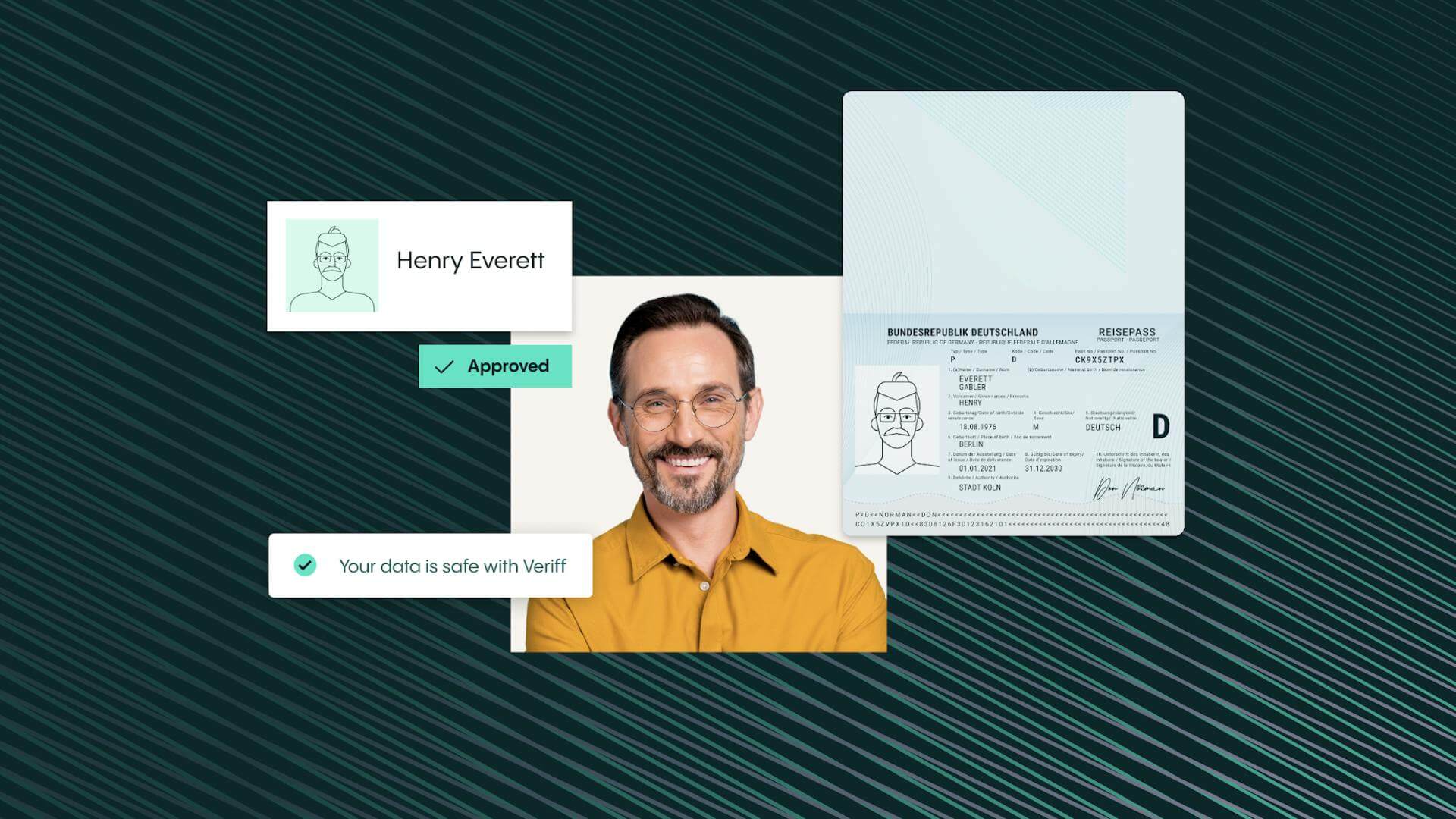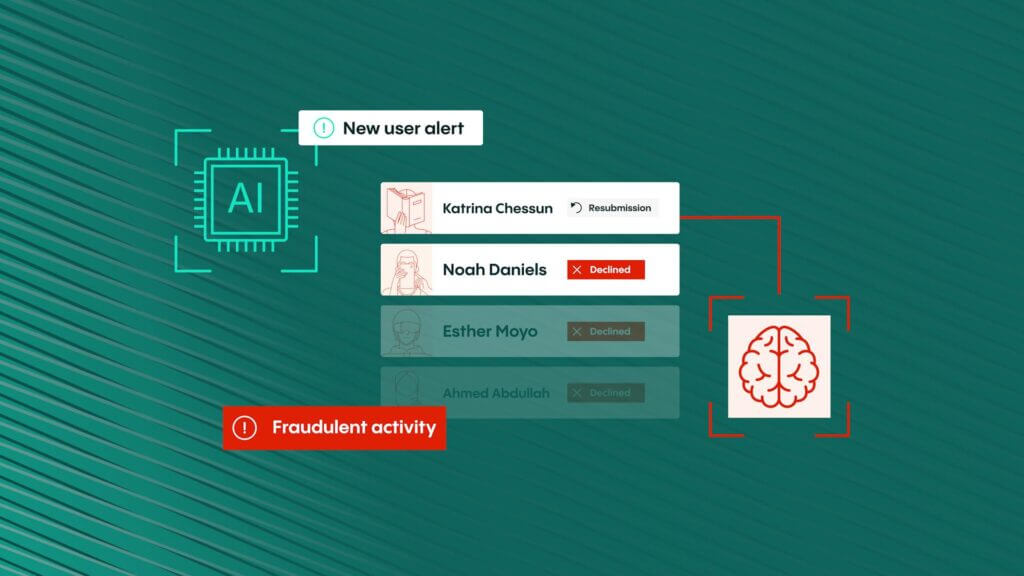Artículo de fraude
La amenaza en evolución: 10 fraudes en línea clave que están dando forma al panorama digital
El fraude en línea ha sido una amenaza persistente durante muchos años. Sin embargo, con el impacto de la creciente digitalización y la incertidumbre económica, David Divitt, Director Senior de Prevención de Fraudes y Experiencia de Veriff, describe las principales tendencias de fraude en línea a tener en cuenta hoy.

En el mundo digital de hoy, es vital que los clientes protejan su información personal identificable y que las empresas prioricen la seguridad del usuario. De hecho, el aumento del crimen en internet, incluido el uso de filtraciones de datos (por ejemplo, correos electrónicos de phishing) para obtener información personal como números de tarjetas de crédito y direcciones de correo electrónico, ha obstaculizado seriamente la confianza en el mundo digital. El fraude con tarjetas es un problema creciente, con actores malintencionados utilizando información robada de tarjetas de crédito para obtener bienes y servicios de manera ilegítima. Desde 2000, el centro de denuncias de delitos IC3 en los Estados Unidos ha recibido denuncias que abarcan el espectro de los asuntos de delitos cibernéticos, incluido el fraude en línea en sus muchas formas, incluidos los asuntos de Derechos de Propiedad Intelectual (DPI), Intrusiones Informáticas (hackeo), Espionaje Económico (robo de secretos comerciales), Extorsión en Línea, Lavado de Dinero Internacional, Robo de Identidad y una creciente lista de delitos facilitados por Internet.
Para tener una mejor perspectiva sobre las crecientes tendencias en el fraude en Internet, hablamos con David Divitt, Director Senior de Prevención de Fraudes y Experiencia de Veriff. Divitt ofreció información sobre el aumento de la ‘guerra de IA’ entre los actores malintencionados y las empresas hasta el colapso de la experiencia del usuario en línea; continúa leyendo para saber más.
Servicios más rápidos significan fraudes más rápidos
“Una ventaja de la digitalización es la velocidad: la velocidad de comercialización, la velocidad de los servicios. Ahora puedes validar tu identidad para un nuevo producto en segundos. Pero los servicios más rápidos significan un fraude más rápido; estas cosas van de la mano. Así que, aunque los servicios más rápidos son enormemente beneficiosos para la sociedad y nos permiten hacer muchas más cosas, también permiten a los actores malintencionados cometer fraudes muy, muy rápidamente.”
La prevención se trata de cambiar el retorno de la inversión para el estafador
“Al final del día, lo que realmente buscas hacer es poner más obstáculos para los actores malintencionados. Básicamente, cambia el retorno de la inversión para el estafador, ese es el nombre del juego. Desafortunadamente, es casi imposible detener el fraude por completo. Pero puedes hacerlo mucho menos atractivo para que los estafadores busquen otras alternativas.”
Es mejor detener el fraude antes de que pueda comenzar
“En un mundo digital, una vez que se roba dinero, puede ser lavado de manera muy eficiente. Una vez que eso ha sucedido, es extremadamente difícil recuperarlo. Así que, el mejor enfoque es detener el problema antes de que pueda siquiera comenzar. Si los estafadores no pueden configurar cuentas fraudulentas, no pueden usarlas para cometer fraude. Con una verificación efectiva, estás abordando el problema desde su raíz, antes de que pueda convertirse en un problema mayor.”
Los humanos son el eslabón más débil de la cadena
“Debido a que la tecnología ha hecho un buen trabajo al detener gran parte del fraude, desafortunadamente los estafadores ahora están dirigiendo su atención directamente a los humanos involucrados. Las cerraduras en la puerta son muy buenas, así que consigues que la persona que posee la llave real te abra la puerta. Esa es quizás la tendencia más preocupante que hemos visto en los delitos financieros y no financieros. La gente necesita ser más consciente de que son los objetivos.”
La experiencia del usuario colapsada es un problema importante para los métodos de autenticación tradicionales
“La autenticación de dos factores, que normalmente utiliza un código de un solo uso (OTP) enviado por texto a tu móvil, va a convertirse en menos y menos efectiva. Esto se debe simplemente a que la separación prevista entre los dos factores a menudo ya no está; con frecuencia hacemos cosas como comprar en línea directamente a través de nuestros teléfonos, así que si tu dispositivo ha sido comprometido, la autenticación de dos factores no te protegerá.”
La ‘guerra de IA’ es cada vez más una característica del fraude en línea
“El aprendizaje automático es una herramienta poderosa para la prevención de fraudes, pero los estafadores también utilizan esta tecnología. Hay mucha evidencia de que los actores malintencionados están entrenando modelos de aprendizaje automático combativos usando clientes reales o modelos de detección de fraude activos. Así que, comienzas a entrar en una especie de guerra de IA entre los dos lados, por lo que es tan importante seguir invirtiendo y desarrollando tu solución para mantenerte al tanto.”
El fraude puede ser un doble problema para las empresas
“Para las empresas más pequeñas, pagar una gran factura a un estafador puede llevar a la quiebra bastante rápido, porque no solo has perdido ese dinero, sino que también tienes que saldar tu factura con el proveedor legítimo. Así que, el flujo de caja se convierte inmediatamente en un problema. Incluso para las empresas más grandes, si te afecta el fraude y no parece que hayas hecho todo lo posible para prevenirlo, eso puede tener un muy mal impacto reputacional. Sin mencionar las posibles multas por infracciones legales relacionadas con lavado de dinero, financiamiento del terrorismo, trata de personas, etc.”
Los beneficios de la biometría
“Con tecnología biométrica efectiva, el colapso del entorno de múltiples factores se convierte en un problema menor. No importa si un estafador puede interceptar un código de un solo uso si no pueden probar que el verdadero titular de la cuenta está presente físicamente en tiempo real. Entonces, empieza a crear una separación de los dos factores nuevamente. Junto a eso, puedes tener cosas como una identificación digital con seguridad biométrica envolviéndola para controlar el acceso, lo que crea una seguridad mucho más fuerte que un simple chequeo de una identificación en papel.”
La necesidad de balancear el péndulo
“Hay lo que yo llamo un péndulo eterno, que representa el compromiso entre la experiencia del cliente y la prevención de riesgos. A medida que tu negocio cambia, a medida que cambia el panorama del fraude, y a medida que cambia el panorama de los clientes, querrás poder balancear ese péndulo de un lado a otro. Puedes hacer muchas cosas que son invisibles para tus clientes recopilando datos sobre cómo interactúan con tus servicios y utilizando esto para calibrar tus herramientas y estrategias. Pero a veces la fricción tiene que estar presente.”
Una buena experiencia de fraude es algo poderoso
“Como consumidor es sorprendentemente fácil ser estafado y cometer un error que podría resultar muy costoso. Así que, si un negocio con el que tratas cree que alguien podría estar intentando aprovecharse de ti y pone una pausa en las cosas mientras aclara la situación, siempre que te contacten para informarte, es probable que sientas que están cuidando de ti. Las empresas que hacen esto bien cosechan los beneficios en términos de relaciones positivas con los clientes.”

Obtén más detalles
Para obtener más información sobre cómo las soluciones de prevención de fraude de Veriff pueden ayudarle a enfrentar la amenaza para su negocio de actores malintencionados, visite nuestro Centro de Educación sobre Fraude.














